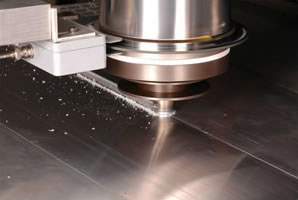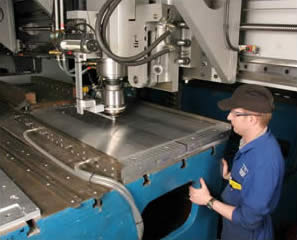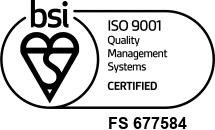Friction stir welding is a welding process invented by TWI in 1991. The process involves a spinning tool, in contact with the material to be welded, with sufficient down force to create frictional heat in the material (about 80% of the material’s melting point). This causes the material to become soft, allowing the spinning tool to create the weld.
Friction stir welding is now widely used in the aerospace, automotive, rail and ship building industries.
Unlike other friction stir welders, the LowStir friction stir welding 
The current LowStir base system comprises the necessary hardware and software to convert a suitable milling machine to a LowStir stir-welding system including an ISO taper (or equivalent) to fit it to the milling machine. Since this depends on the particular machine, the size and type of taper must be specified when requesting a quotation (as costs of tapers can vary).
Benefits of Friction Stir Welding
- Improved weld properties (e.g. strength, fatigue) compared to arc welding or riveting. Joint efficiencies of 75-96% have been reported depending on materials.
- Because it is a solid phase process (where the materials are joined without melting) no shielding gases or filler materials are required. Furthermore, there is almost complete elimination of weld distortion and solidification defects.
- Operators do not need special qualifications or certification.
- There’s no arc welding, gas emissions or weld spatter involved.
- Vastly reduced preparation and reworking time reduces costs, time and labour requirements.
- Low power consumption; The only energy required is to rotate the tool and apply force to it to create the frictional heat. Without the large current requirements of arc welding, energy consumption can be reduced by 80% plus.
The LowStir System
Specifically, the basic components of the system are as follows:
1) LowStir Mk.2 sensor head unit including tool holder and heat shield disc. This is supplied already bolted together as a complete system including the ISO taper, ready for installation in the milling machine head.
The LowStir unit is capable of measuring:
- Down force (Fz) to 50kN
- Lateral force (Fxy) to 25kN
- Torque (Mz) to 100Nm
- Temperature of the welding tool via an internal thermistor
The unit will run at rotation speeds of up to 3000rpm and log data at software selectable rates from 1Hz to 100 Hz.
2) Inbuilt battery. When fully charged, the LowStir unit’s inbuilt battery has a battery life of approximately 10 hours. The unit is supplied with a battery charger, which can recharge this battery from the mains. The charger automatically deactivates when the charge is full, so the unit can be safely left to recharge overnight.
3) Jack plug switch. The unit is also supplied with a jack plug switch which can be inserted to completely disable the unit and store any remaining charge.
4) Set of tool assemblies. A typical assembly comprises a low wear shank and a replaceable tool (probe). If you order one tool type there will be one shank and ten probes supplied. If you order two different types of tool then there will be two shanks (one for each material to be welded) and five probes supplied for each of the two shanks.
5) Taper. As mentioned above, the system includes an ISO taper or equivalent specific to the milling machine to which the LowStir is to be attached. The size and type of taper required must be detailed in advance, and ordering the incorrect taper will make it impossible to fit the LowStir unit.
6) Software for monitoring and recording various parameters of the weld. Note that the software is supplied uninstalled and uncalibrated. We strongly recommend the optional laptop package, as this is supplied with the software and Bluetooth connection fully set-up and calibrated. See Optional Extras below for more details.
Optional Extras
The following are optional extras that can be supplied at extra cost. Please specify any extras required when requesting a quotation.
1) Internal temperature probe. The system can be supplied with an internal probe which is used to monitor the temperature of the weld pool via a probe fitted to the inside of the welding tool holder.
2) Laptop. The software can be provided ready installed on a laptop computer. In addition, the software will be calibrated for the specific LowStir unit, and the Bluetooth connections established between the laptop and the unit. It is strongly recommended that this option is taken, as it means that the system is ‘plug and play’ and removes the need to calibrate the system on-site.
Licence
Please Note: Currently you will need a licence from TWI to carry out friction stir welding. This applies to ALL forms of friction stir welding, including using LowStir. Please contact TWI or Ollie Morcom at Applied Measurements Ltd for more information.





